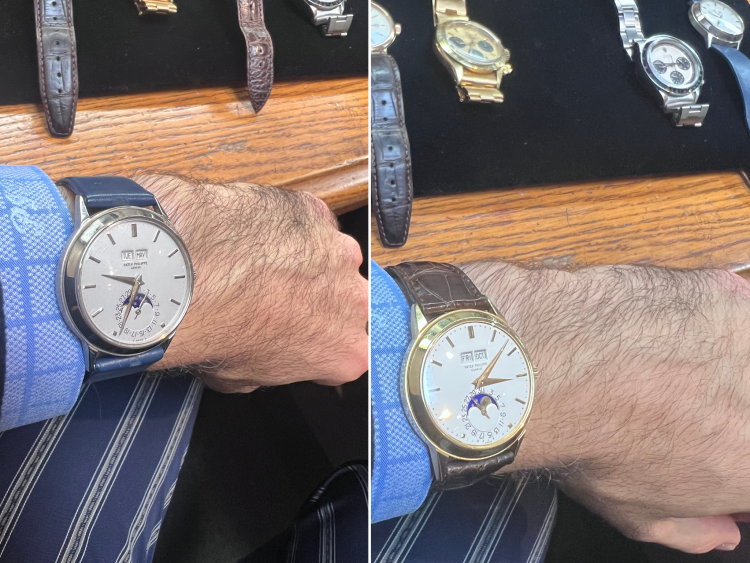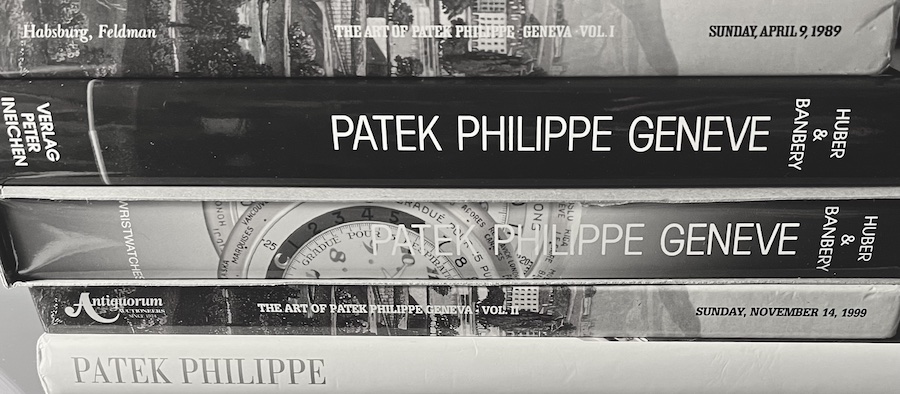How do you eat an elephant?
One bite at a time.
~Pete D’s Mother (1956-present)
Not for the first time, and certainly not for the last, I’m going to contradict myself here. I know, I know, I just went on a yuuuuuge rant about the SUPREME HUGE VERY SIGNIFICANT IMPORTANCE OF THINKING AND ACTING “MODERN AND MAJOR,” but what if reality is more complicated than that? What if timing isn’t everything, it’s the only thing, and there’s a time to be Major and another time to be Minor?
Let’s say we grant that timing matters. Well, what time are we in now then? To describe it, you might say we’re in a time of pained megalomania; a time of surreality; a time of gospel; a time of performance; a time of maximalism; a time of kitsch; a time of consumption; a time of opacity; a time of cultic truths; not to mention a time of sensory overload and insane over-stimulation.
So is it any wonder that so many of us seem to be finding solace and salvation in the small, obsessing over NFT “rarity rankings” or, say, “transitional references”i of Patek Philippe perpetual calendars? Probably not! Arguably, it’s in these narrow, definable domains that we can come closest to finding “truth”ii when we’re otherwise bewildered by the sheer number of constants being flipped into variables. In this world of bandwidth spamming and clickbait crack, it’s the nuanced traits, provenance debates, reawakened wallets (fresh to market!), auction results, and treasure hunting of arcane artifacts that feels only too empowering, even agency-defining.
To quote the bountiful Erik Hoel from his recent piece Exit the Supersensorium [emphasis added]:iii
Imagine two alien civilizations, both at roughly our own stage of civilization, both with humanity’s innate drive to consume artificial experiences and narratives. One is a culture that scoffs at the notion of art. The other is aesthetically sensitive and even judgmental. Which weathers the storm of the encroaching supersensorium, with its hyper-addictive superstimuli? When the eleven hours a day becomes thirteen, becomes fifteen? A belief in an aesthetic spectrum may be all that keeps a civilization from disappearing up its own brainstem. In a world of infinite experience, it is the aesthete who is safest, not the ascetic. Abstinence will not work. The only cure for too much fiction is good fiction. […] art is like a dream that some higher being, more aesthetically sensitive, more empathetic, more intelligent, is having. And by extension, we are having.
Like the archipelago of Venice, smallness is where so much beauty resides, which is why it’s able to create an essential refuge when the world around us seems to be falling to pieces. Finding the minor, veritable “truths” can therefore not only be protective, but also form the foundation for something much greater in the future. At their best, these little passionate pursuits reveal fellow curious travellers with whom new bonds can be formed, which may seem “insignificant,” but is in fact the raw material of civilisation.iv There’s grace in smallness, and strength as well.
So if you need me, I’ll be elbow-deep in old catalogues,v comparing yellow gold 3rd series Patek Philippe 3448 dials with reversed large calendar ring, perlé minute markers, Swiss (not Aprior) mark, and strong case with non-PP crown; to the white gold 4th series 3448 dials with reversed large calendar ring, printed small baton minute divisions, Aprior “Sigma Swiss Sigma” marks, and slightly overpolished case (note the thinner lugs) with non-PP crown; and so much more…
 Both 3448s (and background vintage Daytonas) are available at Van Rijk in Toronto
Both 3448s (and background vintage Daytonas) are available at Van Rijk in Toronto
- What is a “transitional reference,” you ask? I suppose we should start by defining what a “reference” (also called “reference number”) is: basically it’s an alphanumeric code given by the manufacturer to describe a specific model. Now a reference is not to be confused with a “series,” which is a collector-defined generation within a given reference. In the case of the current object of my desire – the Patek 3448 aka “Padellone” aka “Disco Volante” shown above – scholars on the matter consider there to be four series of production between 1962 and 1981, each with different dial designs (for more on which, see Hodinkee and Le Monde Edmond). Typically case designs will stay consistent across a production run, but multiple case manufacturers may still be used for a given reference, which may therefore result in slight differences in case constructions and resultingly in collectability, eg. early Patek 3939 cases being made by the legendary casemaker Jean-Pierre Hagmann, or Patek 1518 cases being made by Vichet, Wegner, or Georges Croisier. It’s also possible that movements are upgraded in the middle of a series, such as in the Patek 5711 Nautilus being upgraded to 26-330SC movement with hacking seconds in 2018. But we digress! Essentially a “transitional reference” is one that sits at the juncture between “past” and “future,” which involves blends of parts and/or production methods that define specific eras of manufacturing. Usually transitional references have shorter production runs. The 1st series Patek 3940 and 3970, as well as the closely related 3941 and 3971 with sapphire casebacks, would fall into this category. ↩
- We supposedly live in a “post-truth” world, but has it ever been otherwise? We used to have grand religions and glorious nation-states, but were those really the good old days of “truth”? If so, what were Martin Luther and Martin Luther King, respectively, so fussed about? Dig a little further into history and you’ll probably find that the truths of today are just as reflexive and subjective as the truths of yesterday, and that they’re all subject to the same hype cycles of inflation and disinflation, which is to say that their importance is always contextual and that the context is ever-fluid. ↩
- Archived. ↩
- To quote the good Rabbi Zohar Atkins from his recent article The World Hangs By A Sandal Strap [emphasis added]:
Tefillin and tzitzit are literally fringes but they are also commandments that may seem fringe, especially in the eyes of a secular rationalist or unaccustomed to them. But the argument is: the observance of these small things, precisely because they are strange, precisely because they are marginal, can be the basis for Jewish longevity, and the key to staying away from Sodom. Do they empirically work, keeping us away from evil? Not necessarily. But the idea is powerful: to look at the fringe is to be reminded that it is all that separates one from evil. We have to live in the world, we have to compromise, but we also need to know ourselves well enough to know when to refuse. Only a fringe, a sandal strap, keeps us from succumbing to the lures of Sodom. The image connotes hope—it is possible to say “no”—but also fragility: “Is this all that is protecting me from the difficult world out there??”
The key to a great future is made up of lots of small acts and small commitments. The key to a great culture is made up a handful of good relationships. According to Ecclesiastes, as parsed by the sages, three solid generations or even just three solid contemporaries can make a world of difference. And so to concede to the King of Sodom is not just a political error but an ontological one: it’s to underestimate the collective agency that we have to make the world better, starting with deeds that seem, on their own, negligible. To focus on structural issues to the detriment of personal and interpersonal cultivation is to lose the thread. The health of our civilization requires that we continue to value things even when we are told that they are insignificant.
Are wristwatches and NFTs our modern-day tefillin and tzitzit? There’s certainly an argument to be made there. ↩
- The 1989 Antiquorum auction catalogue is a must for fellow Patek obsessives! It marked the 150th anniversary of the manufacture, where it launched the most complicated watch in the world at the time – the Calibre 89 – while also recommitting itself to the most poetic of complications – the minute repeater – and at the same time saw blockbuster auctions of several important historical wristwatches including one of three 3449s (which would go on to be owned by John Goldberger) and one of two Platinum 2499s (which would go on to be owned by Eric Clapton). For an auction history perspective, it was also the first “thematic” auctions of the modern era, which is itself notable.


[…] with our friends and colleagues, comme il faut, and just generally enjoying life, including our increasingly decadent obsession with minutiae, all mediated by increasingly engrossing entertainment.xii So what have we to fear but fear […]
[…] not only vintage works but even vintage catalogues of said works, immersing ourselves in the “smallness as protection” against the slings and arrows of outrageous fortune whizzing only too close overhead. […]
[…] maybe this is just the protective smallness of middle age that has me lying awake at night wondering about my own prospects for […]
[…] that’s it! We delight in “speccing” because we cower in smallness – and even take pride in it – if perhaps necessarily so. Who are we to move mountains […]
[…] the circle of control is really unbelievably small. And that’s okay! […]
[…] that the exact Patek reference matters! In fact, getting lost in such minutiae is a distracting effect that elides that actual underlying causes. Because no matter how you slice […]